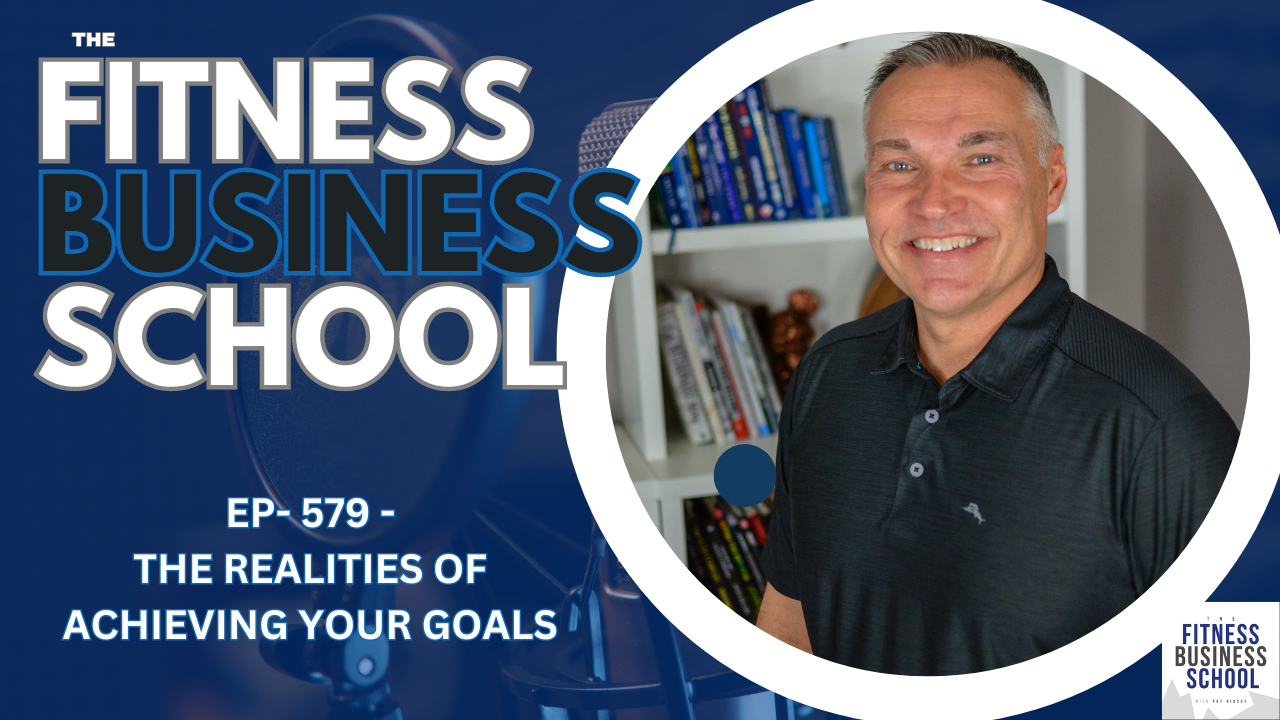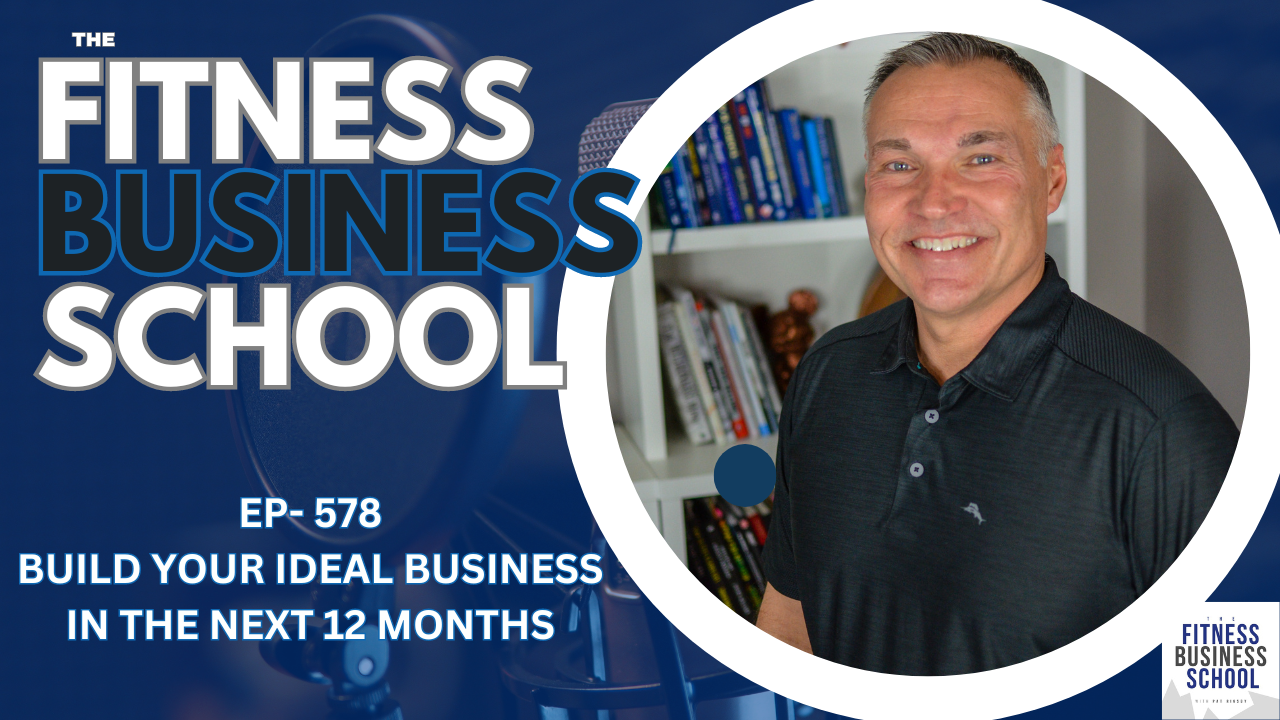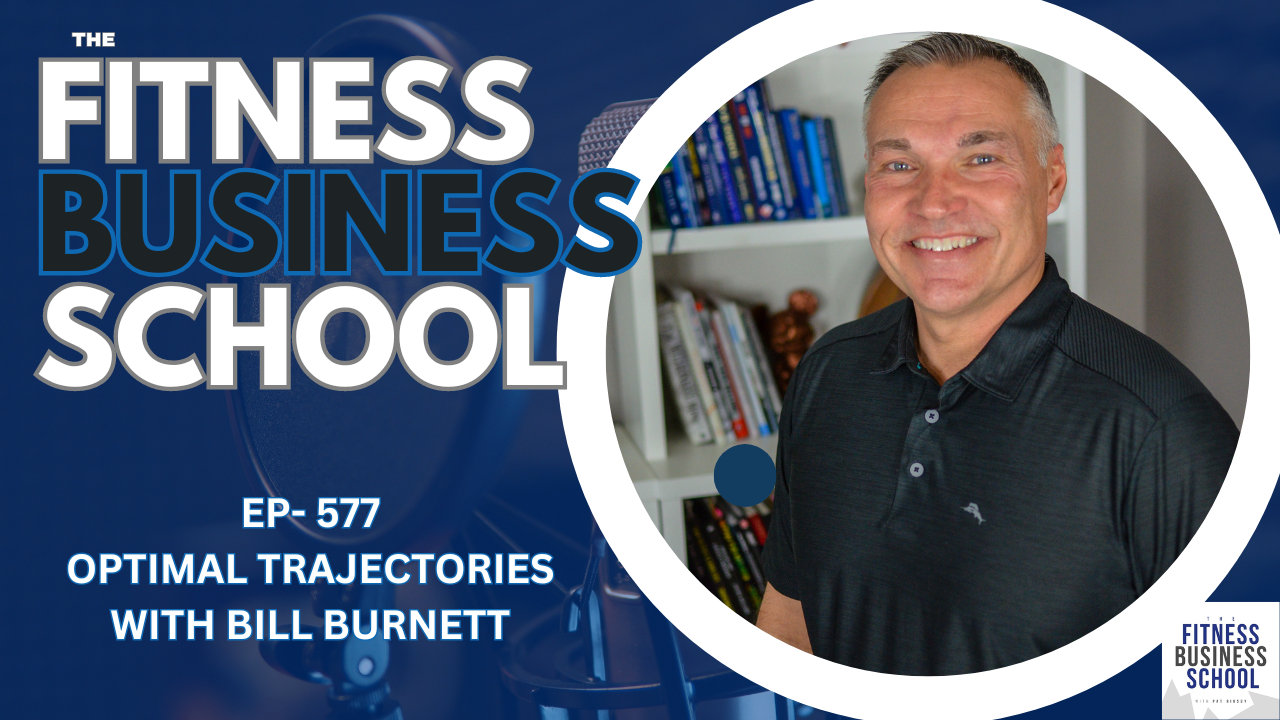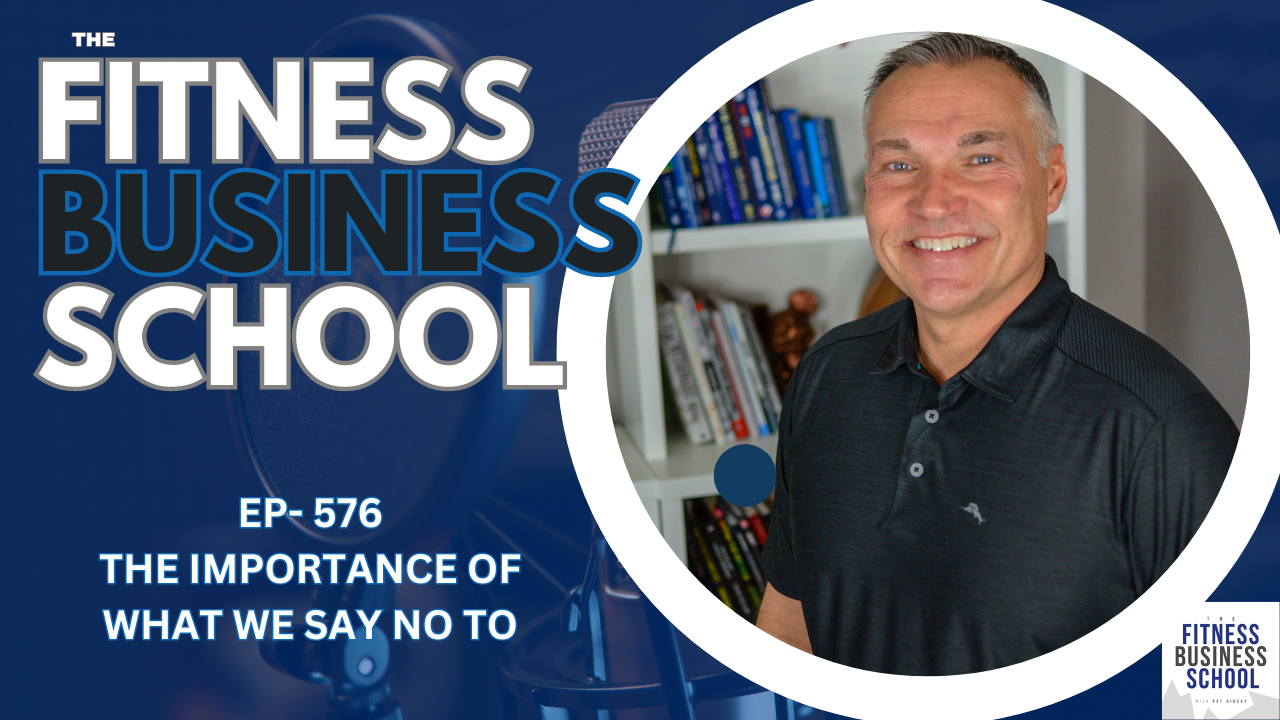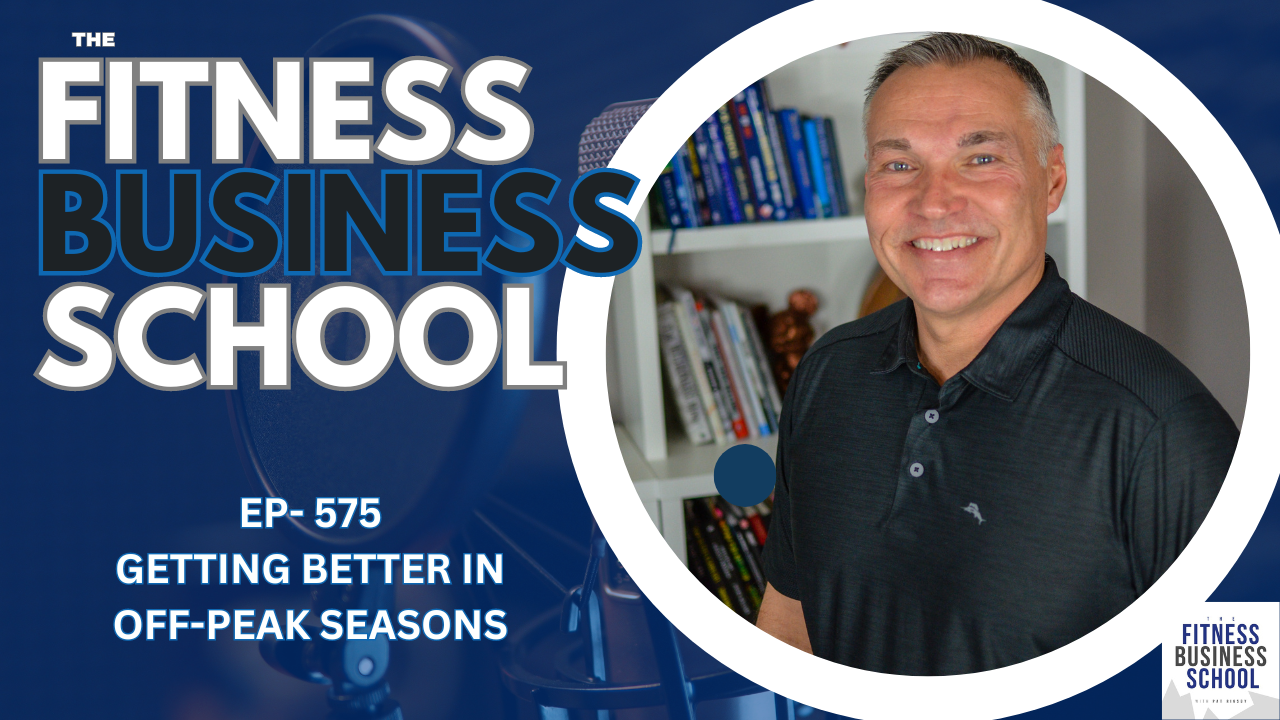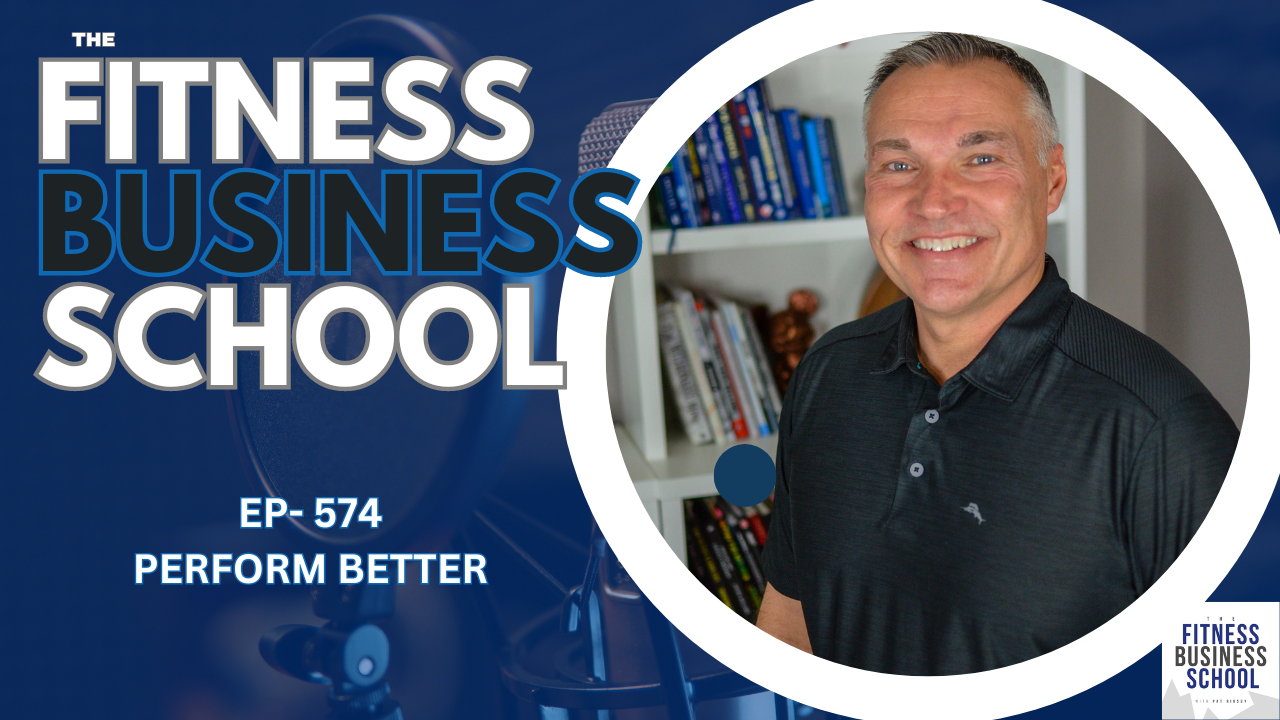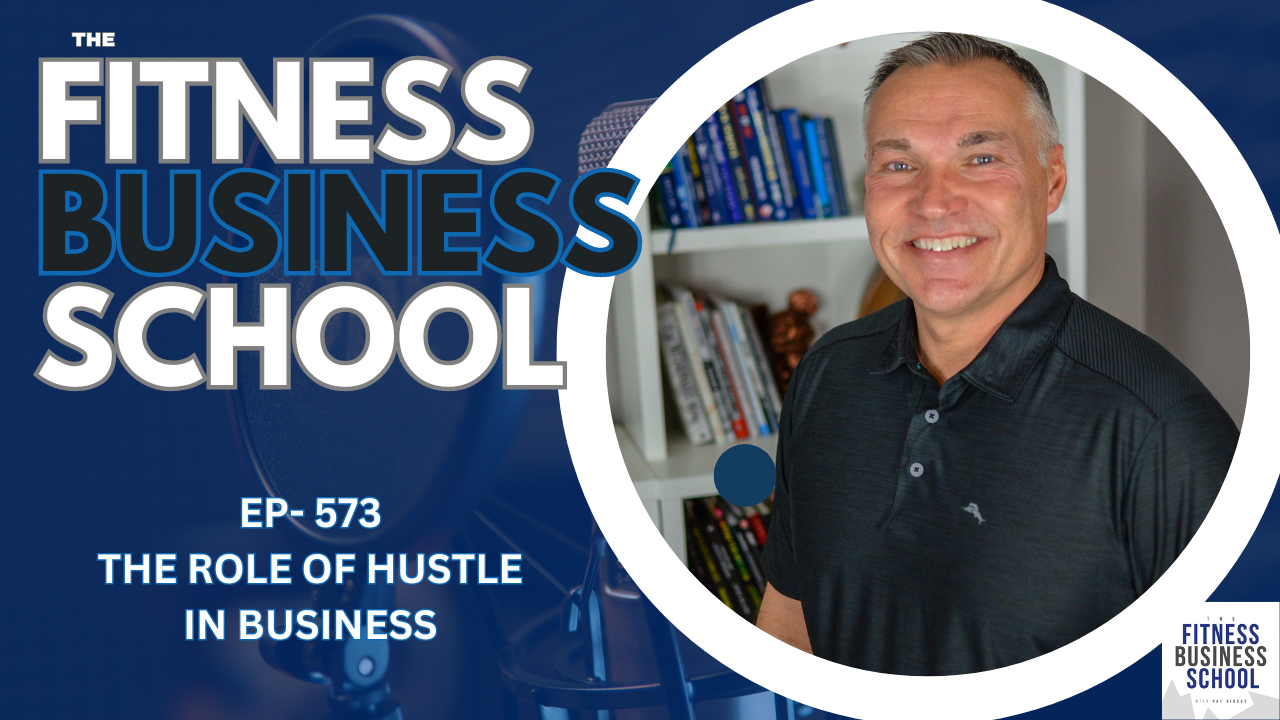Show Notes
00:00 Introduction to Simple Growth
01:02 Step 1: Identifying Your Ideal Client
05:06 Step 2: Targeting Low-Hanging Fruit
07:05 Step 3: Connecting and Converting
10:38 Step 4: Ensuring Client Happiness
12:12 Step 5: Optimizing Your Role
15:21 Conclusion and Special Offer
Full Transcript
Hey, Pat Rigsby here and in today’s episode, I want to share five steps for simple growth. Let’s get to it.
Welcome to the Fitness Business School podcast, the show for fitness business owners who
want to grow their income, increase their impact and improve their lifestyle. Be sure to listen to the end
of this episode because we have a brand new special offer exclusive for listeners. So stay tuned.
If you want to grow your business, it’s not all that complicated a process. I’m not saying it’s easy because I don’t think business is designed to be easy, but it’s not overly complex. It requires work and effort, but ideally it’s smart work. It’s strategic effort. And here, five steps to help you be more strategic, to help you narrow your focus and move closer towards where you want to be rather than just feel like you’re doing more.
So step one is selecting the ideal client you’re trying to reach and connecting with the target market that they’re in. So think of it this way. Like I think of a target market. As a neighborhood and the neighborhood is like where your ideal clients reside. It doesn’t mean that everybody in the neighborhood is your ideal client, but it’s a higher probability way to narrow your focus.
If you see businesses like you see real estate agents and roofers and landscapers and any number of people do that where they’ll go and target a neighborhood and say, okay, this is a pool or collection of people that there’s a higher probability that they might be a good fit for what I do.
And I don’t think a lot of people do things that way. They almost just do that spray and pray approach to marketing where they’re spreading themselves too thin. They water down their message. So they, Try to reach everybody. I talked to training business owners all the time that say, I can help this person in this person.
It’s not that you can’t help them all. It’s that the less specific you make it, the less they’re attracted to what you do. And. Maybe a way to illustrate this is I’ve had clients who have owned everything from law firms to agriculture businesses. I’ve worked with countless baseball specific training facilities and athletic performance facilities.
I’ve worked with private practice medicine. I’ve worked with retail businesses. I’ve helped a couple of people that own restaurants. I, you name it, event planning down the line. I’ve worked with people not because I pursued them, but usually it’s because of referrals. And I’m certain that I can help that type of business in the same way that I help training business owners And have a pretty extensive track record to prove it.
But if I started talking about every type of business and mixing and matching messages and saying, Hey, if you own an auto repair business, it’s like this. And if you own a dry cleaner, it’s like that. And then it would lose its strength in speaking directly to the training like fitness and sports performance business owners because like the messaging would, because they wouldn’t feel like it’s specific for them.
And yours is the same exact case. You’ll see people in our industry go to places where they are, Generalizing their message to match whoever’s going to be attending. It doesn’t matter if it’s at a health fair or a community event or something like that, they’ll water it down instead of saying, look, there may be 500 people here, but there may only be five of my people.
So I’m going to be re I’m going to double down. On my message. So those five people gravitate directly to me. So focus on your single target market. And that doesn’t mean it’s the only market you can ever serve. It’s just put the other ones on hold, put them on the back burner until you’ve locked in a consistent path to fill your pipeline with the right prospects over and over.
And if you’re not sure who those are, Look at the top 20 percent of your client base, the people that you enjoy working with that get the best results, the people that are your people and use that as the starting point, not necessarily who they are today, but who they are when they found you. Because obviously if they’ve been with you for a while, they’ve evolved, they’ve their perspective on fitness, their results their work ethic, all that stuff may have evolved and changed, but who were they when they found you?
Now go find more people like them that can grow into the type of people that you’d love coaching. So that’s step one. Step two, start picking what I’d call the low hanging fruit. So once you’ve selected your single target market, you see very quickly how your focus changes, right? No more shiny object, no more kind of just, looking around at everybody, you know what you’re looking for.
So it’s the, it’s then time to start connecting with what I call the low hanging fruit, the people that are easiest to find and reach. Once you know who they are, it’s about getting the message out to their world, right? And focusing your attention On getting them to know you and like you and trust you and demonstrating how you can help.
So if you know who they are, you can form strategic alliances with businesses that serve them. You can be present at events that they’re going to attend or participate in. You can sponsor or be involved in social groups that, that they’re a part of. You can do direct mail to find them. You can do. You can run Facebook ads and specifically target them or speak at events that they’re going to be at.
Heck, you can even do very targeted media. To reach them. If you were trying to reach somebody in my neighborhood, you could sponsor our community events. You could sponsor an email drop that runs through our HOA. So there are plenty of options that you have and they’re not hard to find. And sometimes it’s as simple as making what we call a call out post and just sharing it on social media and say, I’m looking for, People that fit a certain criteria and have certain desires.
And there, there are people in your network, people in what we call your personal profit pipeline that, that are that person. And now you’re going to get them to raise their hand. So step three is you’ve got to connect and convert. So you meet people. And then you make as many offers or extend as many invitations as you can.
And I love the word invitation in this sense, because we’re not. This isn’t a kind of an adversarial thing the way that some people make sales out to be. This isn’t, I win, you lose. This is an invitation for me to help you move forward and for me to be a guide or a partner in this journey to help you go from where you are to where you want to be.
And so you invite them to experience it. You invite them to your irresistible offer. You invite them in for paid offers, trials, it’s going to vary by business. What’s going to be the best approach for you. And you know what? Some people are going to want to work with you now. Some aren’t, some are going to say not right now.
And the timing’s not going to be great. And some are going to, they’re going to experience the way that you follow up and see the social proof and see you demonstrate how you can help. And they’re going to say, Oh, you know what? Maybe this is for me. And so you just keep connecting with them. Obviously I’ve sent a daily email newsletter for 18 years and the number of people that say, I’ve been reading your newsletter for X number of years before they became a client is amazing.
And that’s okay. Would I like people to become a client sooner? Maybe, but I also know that if they join because They become a client, they start to work with me. It doesn’t matter if it’s consulting or in a group program or something like that. If they do it because they’ve decided this is the right thing in the right time for them, they’re more likely to stick than if they’re doing it because of some desperation or some kind of impulsiveness.
Some of that, they get to sort them, sort things out for themselves. And by the time they arrive here, they feel like they, they found what they’re looking for, not they’re just trying to plug holes in the dam. And that’s why if you’re listening to this, Podcast, it’s, this is the same type of conversation we’d have if you’re sitting in the office with me for strategy, like a strategic planning session where we map out your ideal business, or if you come to a mastermind event, there’s, there, there’s not much difference at all between what in an email, what you hear on a podcast and what in person.
And frankly, I would tell you in the online world, that’s a rarity. There’s the staged choreographed social media version of people. And then there’s the real version of people. And I think you’re definitely getting my reality show right here. And I would encourage you to maybe do a little bit of the same.
So when people come to you, they’re excited about, Hey, I found the right place. This is for me. They’re not disappointed because it didn’t live up to the marketing hype. And if you maintain that attention, you build a relationship. Like it’s okay. If you’re not somebody’s first coach. It’s totally fine if they try a different program first, I’d rather be their last coach.
The one they stick with the longest after they tried something out and said it wasn’t for them. And then when they’re really ready to make a change, you’re the category of one. So the fourth step is you make them happy. And I know that sounds really simple and you may be One of those coaches that are like, that’s not really my deal.
I need to train people and they just need to get a result. But let’s face it, if the, if they’re not happy about the experience, they’re not going to stick with it long enough to get a result or they may tolerate something in the short term, but it’s not going to be this lasting thing. We talk about, Oh, we want this to be a lifestyle.
I don’t think people
are leaning into, Hey, I want a lifestyle that makes me unhappy. Our job is to help them become more happy. And happy doesn’t mean easy. Happy means fulfilled and accomplished, accomplished and feeling important and feeling valued. And somebody can come in and work really hard and while their heart rates through the roof and they’re pushing themselves in the training session, they may be uncomfortable, but at the end they’re going to have a deep sense of accomplishment and they’re going to have some camaraderie and they’re going to know that they’ve got an ally and a teammate in you or teammates in you and your team.
And so If you do that in a way that compounds, so they reach their goals, because let’s face it, what we sell is not usually immediate gratification in the sense that if they want to lose 20 pounds, it’s going to happen overnight. No, they’ve got to have some daily wins that stack up over time. But if you deliver an experience that they want to be a part of, that keeps them moving towards their goals, they’re going to be thrilled.
They’re going to become an ambassador for what you do. And then finally, step five is, We need to optimize our role. That’s something that, that I think that unless somebody is guided to do this, it doesn’t happen nearly often enough in small business. And I say small business, not exclusively in our industry, I see so many fitness business owners.
being stuck in the same role they were as a startup and feeling like they’re a prisoner of their schedule. And if they don’t, if they don’t do things exactly like they’ve always done them, it’s this house of cards that will fall down. And it’s so not true. I have coached at this point, thousands of business owners.
I’ve coached other business coaches who were in that situation and incrementally move their way out to the point that. Now they have plenty of capacity to coach other business owners based on their business model and success they’ve had. You are not somebody who is destined to only be a prisoner of your own success if you do fill up your schedule, but you can’t optimize your role.
You have to do it with purpose, with intent, with strategy, and you can do it by starting to outsource, by delegating, by systemizing and even eliminating some things. And then I think that most of us, Without question and without too much problem or hassle can get to a point where we’re spending 80 percent of our business time in the areas we’re best suited to and are most enjoyable that I’m not going to tell you like this isn’t lifestyle business, laying on a beach, sipping pina coladas.
It’s, there’s stuff that you’re probably going to get roped into doing that you don’t want to do. When something breaks, let’s win. When it’s tax season or whatever else, that may not be your optimal role, but you can spend the bulk of your weekly time doing the things that you are best suited for.
And if you do the other items that I alluded to first, then this is just a choice. And you have the freedom of choice to evolve your role in your business. So that’s it. That’s five steps to growing and growing. Not so much in the sake of more, but growing towards. And better may mean more in some cases, but it may mean less than some cases, less late nights or really early mornings or weekends being overwhelmed, coupled with more personal income and more fulfillment because you’re coaching the right people and your business serves people that you really enjoy making a difference with.
So if you follow these five steps, I think they’re pretty straightforward, but they do require a commitment on your part. But if they’re executed well, there’ll be a foundation of a great business that you’re really excited to own.
Thanks for listening to this episode of The Fitness Business School.
Before you go, I have a quick announcement:
One of of the things that we’ve been doing with our current clients is taking them through this Ideal Business diagnostic and really what it is, this checklist that allows you to pinpoint exactly what your business needs next so you can keep improving, keep growing, and build a business that you love to own, one that pays you well, one that allows you to have the impact you wanna have and one that allows you to have a lifestyle that you truly enjoy.
In this diagnostic, we walk through everything and we do an evaluation and can instantly pinpoint what you need to do next to build that business that you want. I’m going to extend this opportunity to get on with either me or my team and take you through this evaluation and fix your business’s most vital needs fast.
So if we take you through this, you’re gonna be able to make those vital changes that you need to finally have what I call your Ideal Business. If you’d be interested in going through this entirely free, risk-free diagnostic with us and learn what you already have in place, what you’re doing well and where are your greatest opportunities for rapid improvement are just shoot me an email with diagnostic in the subject line to [email protected].
Again, an email to [email protected] with diagnostic in the subject line will get
you scheduled and take you through this evaluation to help you build the business you want.

